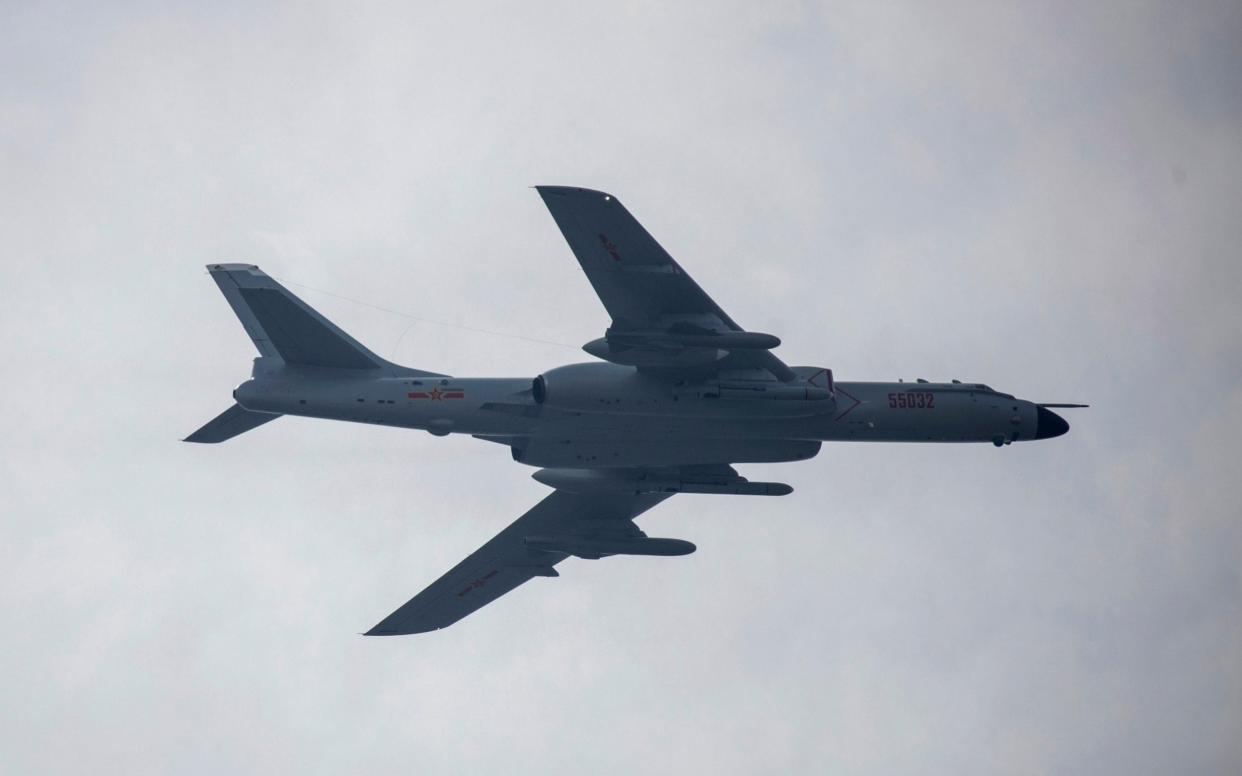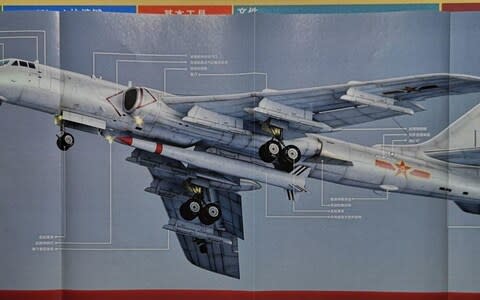How a publishing error may have revealed China's secret super missile

A Chinese magazine may have accidentally committed espionage after it published what appeared to be the first image of a top-secret missile system.
The apparent gaffe came in a centrefold graphic devoted to China's new H-6N strategic bomber in the latest edition of Modern Ships, a government-produced magazine.
The H-6N, which is modelled on the Soviet Union's now retired Tu-16 Badger bomber, is a long-range aircraft designed to project Chinese air power into the western Pacific.
But in the image published in Modern Ships showed the aircraft with a never-before-seen ballistic missile strapped beneath its fuselage.
The huge missile is unlike any known Chinese weapons system and analysts believe it may be the first glimpse of an air-launched ballistic missile (ALBM) Beijing is known to have been working on.

Malcolm Davis, senior analyst in Defence and Strategy capability at the Australian Strategic Policy Institute, said: "This may be the CH-AS-X-13 Air Launched Ballistic missile (ALBM), which is evidently an air-launched variant of the DF-21 medium range ballistic missile.
"The combination of the range of that system - about 1700km plus the range of the H-6N - would give China greater ability to strike either at land targets as far out as Guam, or potentially, if equipped with an antiship mode, maritime targets at similar range.
"That means, between the DF-26 antiship capable IRBM, this missile, and the land-based DF-21D, China is building a much more sophisticated A2AD in which precision conventional missiles play a major role. "
The Global Times, China's state-owned English language daily, quickly published a piece saying the picture was nothing more than an artist's impression.
"The images are computer generated, merely conceptual and have no official background," the paper said citing an "insider" source.

China is believed to have been developing an ALBM as part of a "carrier killing" missile programme designed to challenge US naval supremacy.
Such a weapon would combine immense speed and range with the ability to carry a nuclear warhead, allowing China to project fearsome firepower deep into the Pacific Ocean.
The only other country to have developed an ALBM is Russia, which unveiled its nuclear-capable Kinzhal missile in 2017.
The H-6N made its public debut in a fly-past marking the 70th anniversary of the People's Republic of China over Beijing last month.
Chinese media trailed the bomber's air-to-air refuelling capacity as its major innovation.
But observers also noted that it lacked the bomb bay of its Soviet predecessor - suggesting it was designed instead to externally carry large missiles in a recess on its fuselage.
China is known to have been working on a series of drones, missiles, and aircraft designed to hunt and destroy American aircraft carrier groups deep in the Pacific ocean.
Last week the South China Morning Post reported that the H-6N was designed to carry the DF-100, a third generation anti-ship cruise missile, or the DR-8, a supersonic reconnaissance drone.
Other weapons in China's new "carrier killer" arsenal include the DF-17, a hypersonic missile that can travel at five-times the speed of sound and is almost impossible to intercept.


